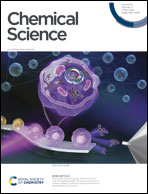Electrocatalytic functional group conversion-based carbon resource upgrading
Abstract
The conversions of carbon resources, such as alcohols, aldehydes/ketones, and ethers, have been being one of the hottest topics most recently for the goal of carbon neutralization. The emerging electrocatalytic upgrading has been regarded as a promising strategy aiming to convert carbon resources into value-added chemicals. Although exciting progress has been made and reviewed recently in this area by mostly focusing on the explorations of valuable anodic oxidation or cathodic reduction reactions individually, however, the reaction rules of these reactions are still missing, and how to purposely find or rationally design novel but efficient reactions in batches is still challenging. The properties and transformations of key functional groups in substrate molecules play critically important roles in carbon resources conversion reactions, which have been paid more attention to and may offer hidden keys to achieve the above goal. In this review, the properties of functional groups are addressed and discussed in detail, and the reported electrocatalytic upgrading reactions are summarized in four categories based on the types of functional groups of carbon resources. Possible reaction pathways closely related to functional groups will be summarized from the aspects of activation, cleavage and formation of chemical bonds. The current challenges and future opportunities of electrocatalytic upgrading of carbon resources are discussed at the end of this review.

- This article is part of the themed collection: 2024 Chemical Science Perspective & Review Collection


 Please wait while we load your content...
Please wait while we load your content...